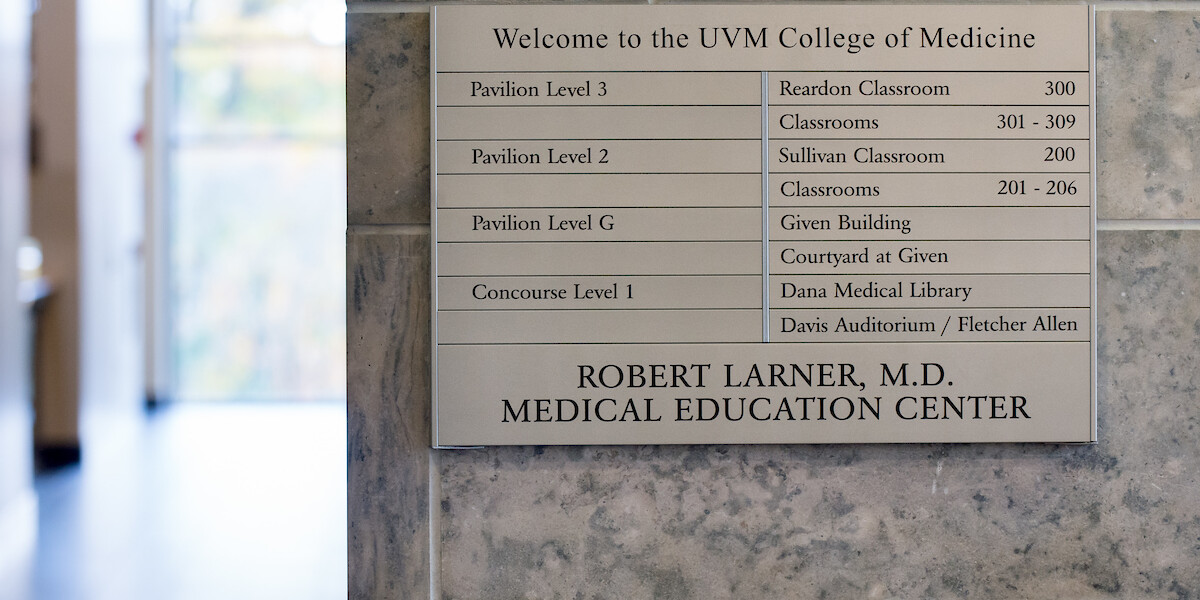Little is known about food addiction in adolescents, so UVM Associate Professor Connie Tompkins and her colleagues set out to learn more.
An expert in the prevention and treatment of childhood and adolescent obesity, Tompkins co-authored a study, Food Addiction: A Barrier for Effective Weight Management for Obese Adolescents, that was published in the December issue of Childhood Obesity. The purpose of the study was to explore the prevalence of food addiction and food addiction symptoms in obese adolescents entering an outpatient, weight management program.
Despite a willingness and desire to lose excess weight, adolescents with food addiction may be unable to decrease their drive to eat, resulting in the possibility of interventions directed solely at healthy eating and physical activity to be less effective.
“These eating behaviors are really having a negative impact on several aspects of these children’s lives. Symptoms including the ‘inability to cut down’ and ‘continued use despite problems’ indicate that they are struggling and need help,” Tompkins says. “I hope that obesity and, in particular, obesity in childhood and adolescence, will not simply be attributed to a lack of willpower. I hope that people can view obesity not as a consequence of the individual but one of the modern day, food environment.”
Tompkins and her fellow UVM researchers—Associate Professor Jennifer Laurent and Associate Professor David Brock—found that one-third of adolescents entering the weight management program in the study met the criteria for food addiction and 50 percent reported three or more food addiction symptoms. In addition, the percentage of adolescents dropping out of the weight management program was higher in those with food addiction compared to those without.
As far as Tompkins knows, the UVM study is the first investigation of the prevalence of food addiction in adolescents seeking outpatient, behavioral treatment for obesity.
Tompkins has been involved with pediatric weight management programs for most of her career, and it was Laurent that approached her about incorporating an assessment of food addiction with adolescents and their parents. Brock has been one of Tompkins’ close collaborators since she first arrived at UVM, and Tompkins says she relies on his guidance and expertise in obesity and the trajectory of obesity from childhood to adulthood.
What is Food Addiction?
The term ‘‘food addiction’’ has been used to describe a cluster of eating behaviors similar to behaviors associated with drug-related addictive disorders. Although food addiction is not currently recognized as a clinical diagnosis, the central behaviors associated with substance addiction, such as craving and withdrawal, are also key factors in disordered or problematic eating and overeating.
Food addiction is somewhat of a controversial topic and it is still inconclusive as to whether it is indeed a distinctly different pathological eating disorder, Tompkins says.
“We don’t exactly know when these eating behaviors may begin but I would propose that it is during childhood before puberty,” she says. “In fact, we saw an increase in the number of symptoms with age. In that case, as the number of symptoms increase, the harder it may be to help these children with weight loss and/or they may require more intense treatment.”
Food addiction may be difficult to treat in adolescents, and it also differs from how adults are treated.
Tompkins explains that as an adult, you may have some control on your food environment. That’s not the case for children and adolescents.
“They are subjected to food environments that are for the most part out of their control, including at school and at home. This places a large responsibility or even burden on these adolescents to develop strategies to manage their eating behaviors in these challenging situations,” Tompkins says.
Tompkins says further research is necessary to identify potential effective interventions or treatment strategies for adolescents with a higher number of food addiction symptoms and/or those meeting the criteria for food addiction diagnosis.
If food addiction follows the same trajectory as substance addiction, then these eating behaviors may likely persist into adulthood, become increasingly difficult to treat using current treatment programs, and result in greater morbidity and earlier mortality.
What does Tompkins hope the research will accomplish?
“Obesity is a complex condition and is not simply due to a lack of willpower or a child being weak and unable to resist unhealthy foods. I hope this brings some attention to—and awareness of—food addiction and the symptoms associated with food addiction,” she says. “These addictive-like eating behaviors are real and negatively impacting these children’s lives.”
-The “UVM Is” series celebrates University faculty, educators, and the campus community.
To learn more, visit UVM Continuing and Distance Education at learn.uvm.edu.




